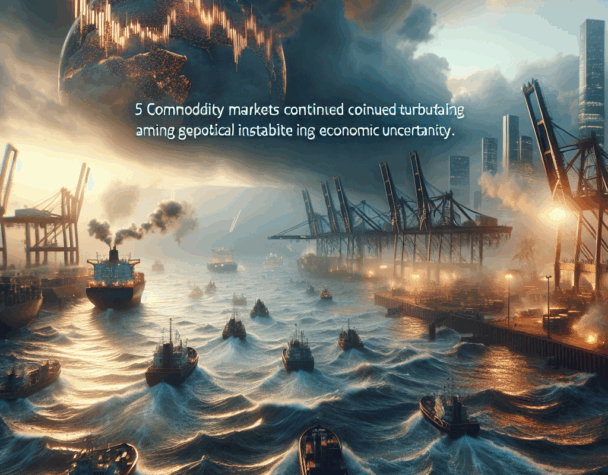
Commodity Markets Face Continued Turbulence Amid Geopolitical Instability and Economic Uncertainty
Thu, June 05, 2025Commodity Markets Face Continued Turbulence Amid Geopolitical Instability and Economic Uncertainty
Global commodity markets are experiencing significant volatility as geopolitical tensions and economic challenges continue to unfold. Major players in the industry are navigating a complex landscape marked by fluctuating prices and uncertain demand.
Trafigura Reports Modest Profit Amid Market Challenges
Global commodities trader Trafigura has reported a slight 3% increase in net profit to $1.52 billion for the first half of its 2025 financial year, despite a 4% drop in revenues to $119.2 billion. The decline in revenue is attributed to lower average commodity prices. CEO Richard Holtum highlighted the impact of unpredictable U.S. trade policies and President Donald Trump’s social media activity on market dynamics. CFO Stephan Jansma emphasized the uncertainty in commodity prices, interest rates, and tariffs, noting that policy-driven market shifts are harder to anticipate than typical supply-demand imbalances. Trafigura posts slight rise in first-half net profit, lower revenues
World Bank Forecasts Decline in Commodity Prices
The World Bank’s latest Commodity Markets Outlook forecasts a significant decline in global commodity prices over the next two years due to weakening global growth and rising trade barriers. Prices are expected to drop 12% in 2025 and a further 5% in 2026, returning to pre-COVID-19 levels observed from 2015 to 2019. While this trend may help moderate near-term inflation, it poses challenges for developing economies reliant on commodity exports. Chief Economist Indermit Gill highlighted the risks of high price volatility and urged developing nations to liberalize trade, strengthen fiscal discipline, and foster private investment. World Bank sees commodity prices falling to pre-COVID levels
Gold Prices Reach Record Highs Amid Market Uncertainty
Gold prices have surged to record highs, driven by geopolitical turmoil and economic uncertainty. Spot gold rose 0.1% to $2,991.00 an ounce, after hitting an all-time high of $3,004.86. The precious metal has gained 14% since the start of 2025, following a 27% increase in 2024. Investors are turning to gold as a safe-haven asset amid concerns over inflation and potential U.S. interest rate cuts. Gold pops above $3,000 per oz for first time in historic safe-haven rally
Indonesia Considers Nickel Production Cuts to Support Prices
Indonesia, the world’s largest nickel producer, is contemplating reduced nickel ore production to boost prices, which have dropped 40% in the past two years due to oversupply. The Indonesian government is reviewing mining quotas to stabilize prices, maintaining a careful balance due to its economic dependence on the nickel industry. Any aggressive cuts could impact tax revenues and the domestic economy. Indonesia eyes nickel production cuts to support price of ‘unloved’ metal
Archer-Daniels-Midland Focuses on Cost Controls Amid Ongoing Challenges
Archer-Daniels-Midland (ADM) is focusing on cost control measures as the challenging commodities cycle, which has impacted its profits, is expected to persist into 2025. The global grains trader is contending with low crop prices, uncertainty around biofuels regulations, and potential disruptions due to a possible U.S.-China tariff battle. CEO Juan Luciano noted that global trade adjustments might ultimately benefit the company, and ADM is preparing for potential shifts in trade flows. ADM sees challenges continuing into 2025, focus on cost controls
As the global commodity markets continue to navigate these turbulent times, industry leaders and policymakers are closely monitoring developments to adapt strategies and mitigate risks associated with geopolitical and economic uncertainties.

